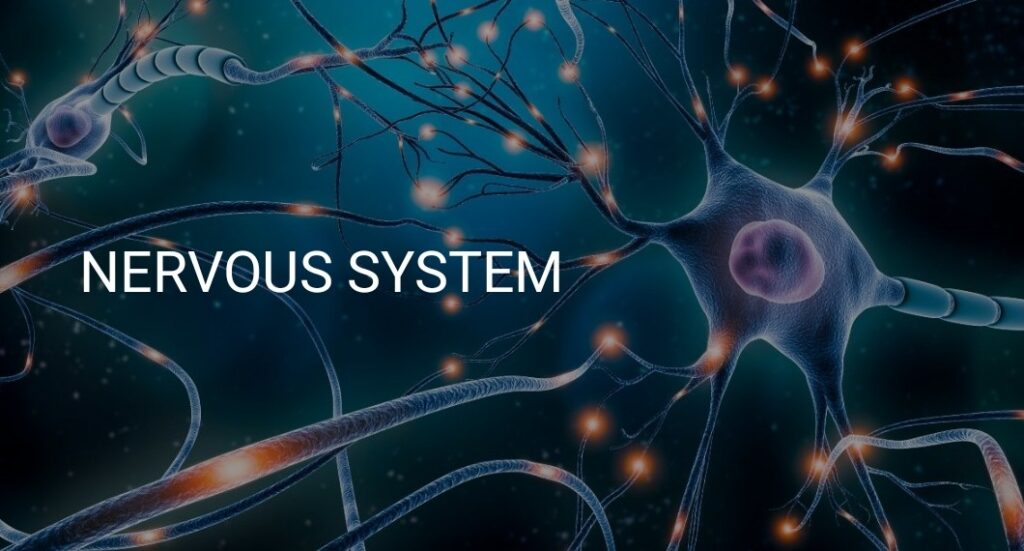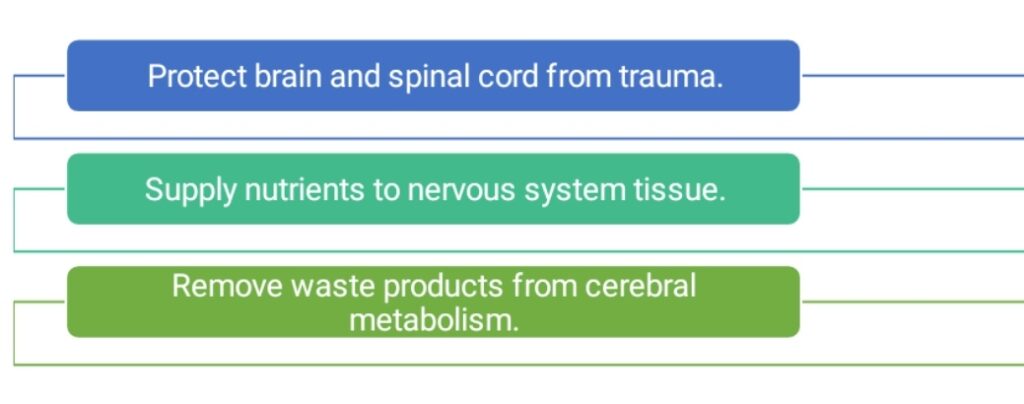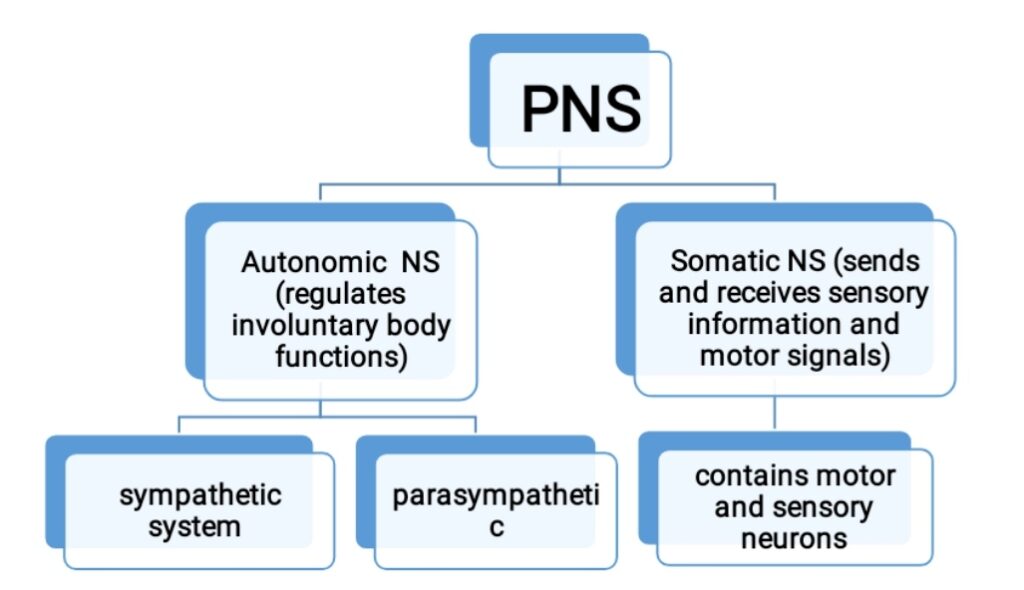What will you learn
- Learn about nervous system
- Neuron structure
- Brain
- Spinal Cord
- Peripheral nervous system
What will you achieve
- You will get the clear Idea about our nervous system

Human nervous system is classified into Central Nervous System (CNS) and Peripheral Nervous System (PNS). CNS is further divided into Brain and spinal cord and on the other hand PNS is divided into autonomic nervous system (ANS) and somatic nervous system (SNS).

The functional unit of nervous system is ‘neuron’. Neuron is composed of cell body, dendrites, and axon. Cell body consists of nucleus, mitochondria, ribosomes, lysosome, and other structures found in any normal cell. The small, branched structures are called dendrites and these receive information from other neuron and carry forward to the axon which is an elongated structure that carries information to other neurons. Axons are covered by layer of fatty substance called myelin sheath which helps to carry the information faster. The nerve endings are called the terminal buttons.
Brain is composed of white (axons) and gray matter (cell body) tissues. A normal adult brain weighs around 1.4kg.
Cerebrospinal fluid (CSF) is a transparent watery fluid that flow in and around brain and spinal cord. The main functions are as follows:
The three major parts of the brain are cerebrum, cerebellum, and medulla oblongata.
Cerebrum
It is the largest part of the brain. The functions are thinking, decision making, planning, vision, memory, learning, emotions, and creativity. Cerebral cortex is the outer layer of the brain.
Cerebrum is divided into right and left hemispheres and four lobes in each hemisphere.
Cerebellum:
It is the most primitive structure and is referred to as ‘small brain’. The functions are motor learning, walking, posture, and balance.
Medulla oblongata:
It is the lower part of the brain. The functions are respiration, vomiting, coughing, sneezing, and swallowing.
Spinal Cord
Spinal cord is a cylindrical structure, protected by vertebral column, runs through the center of spine, from brainstem to low back. It is composed of nerve bundles and cells that carry messages from brain to the rest of body.
It has three main parts:
- Cervical (neck)
- thoracic (chest)
- lumbar (lower back).
Functions
Send motor commands from the brain to the body, send sensory information from the body to the brain, and coordinate reflexes.
There are 31 pairs of nerves and nerve roots in spinal cord.
Peripheral nervous system (PNS)
PNS involves the parts of the nervous system outside the brain and the spinal cord.
Functions:
Control autonomic body functions
Control motor movements
Digestion
Relay sensory information to the CNS.
![]()










